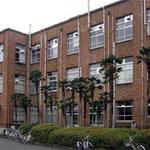Kyoto Institute of Technology (KIT) is a national engineering university located in Sakyo-ku, Kyoto, Japan. It was founded in 1899. The school is famous for its excellent education and research in the fields of technology, fiber science, architectural design, electronic machinery, etc. The following is a detailed introduction to Kyoto Institute of Technology:
Overview
Establishment time: 1899
Nature: National University
Location: Located in Sakyo-ku, Kyoto, close to Kyoto University and Kyoto Prefectural University
Number of students: About 4,000 (including undergraduates and postgraduates)
Educational philosophy
Kyoto Institute of Technology adheres to the educational philosophy of "integration of science and technology, creating the future" and is committed to cultivating talents with innovative ability and practical skills. The school focuses on the combination of theory and practice and encourages students to actively participate in social services and international exchanges.
Disciplines and Faculties
Kyoto Institute of Technology has the following faculties and disciplines:
Faculty of Engineering:
Technology: Technology, Textiles, Materials Science
Architecture: Architectural Design, Urban Planning, Building Structure
Electronic Information Engineering: Electronic Engineering, Information Engineering, Communications Engineering
Mechanical Engineering: Mechanical Design, Mechanical Systems, Robotics
Biomaterials Engineering: Biomaterials, Nanomaterials, Environmental Materials
Business Engineering: Industrial Engineering, Logistics Management, Production Systems
Graduate School
Graduate School of Engineering:
Technology: Master's and Doctoral Programs
Architecture: Master's and Doctoral Programs
Electronic Information Engineering: Master's and Doctoral Programs
Mechanical Engineering: Master's and Doctoral Programs
Biomaterials Engineering: Master's and Doctoral Programs
Business Engineering: Master's and Doctoral Programs
Features
Historical Background: The predecessor of Kyoto Institute of Technology was the Kyoto Higher Silk School established in 1899. After several reorganizations and developments, it eventually became a national university focusing on engineering education.
Educational Features:
Practical Education: The school focuses on experiments and internships, equipped with advanced laboratories and research facilities, providing students with abundant practical opportunities.
Industry-University-Research Cooperation: We have established close cooperative relations with many enterprises and research institutions, carried out joint research and project cooperation, and provided students with internship and employment opportunities.
Internationalization: The school has established cooperative relations with many universities and research institutions around the world, providing abundant overseas exchange and study abroad opportunities, and encouraging students to expand their international perspectives.
Research Strength: Kyoto Institute of Technology has strong research strength in many disciplines, especially in the fields of technology, fiber science, architecture and materials science. The school has many research institutions, such as the Institute of Technology, the Institute of Fiber Science, the Institute of Architecture, etc.
Featured Disciplines
Technology: It enjoys a high reputation in the fields of technology and fiber science, and its research directions include new material development, process optimization, etc.
Architecture: It has a strong influence in the fields of architectural design and urban planning, and has trained many outstanding architects and urban planners.
Biomaterial Engineering: Combining biology and materials science, its research directions include biomedical materials, environmentally friendly materials, etc.
Ranking
Kyoto Institute of Technology enjoys a high reputation among national engineering universities in Japan, especially in the fields of technology, fiber science and architecture. Its national ranking varies according to different ranking agencies, but it is generally in the upper middle level.
Fees
Tuition fees: The tuition fees of national universities in Japan are relatively uniform, and the tuition fees for undergraduates are approximately 535,800 yen/year (for reference only, please refer to the latest official information for specific fees).
Other expenses: including accommodation fees, living expenses, etc., which vary according to individual circumstances.
Campus facilities
Library: It has a rich collection of books and electronic resources, providing students with a good learning environment.
Laboratory: Equipped with advanced laboratories and research facilities to support students' scientific research activities.
Sports facilities: Including gymnasiums, swimming pools, athletic fields, etc., to meet students' physical exercise needs.
Student dormitories: Provide a variety of dormitories, including single rooms, double rooms, etc., suitable for students with different needs.
Contact information
Address: 606-8585 Yoshida Hongo-cho 1, Sakyo-ku, Kyoto City
Tel: +81-75-753-5000
-
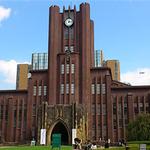
The University of Tokyo
-
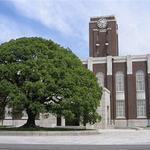
Kyoto University
-
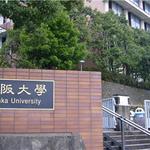
Osaka University
-

Waseda University
-

Hitotsubashi University
-
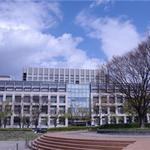
Nagoya University
-
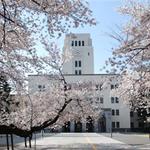
Tokyo Institute of Technology
-
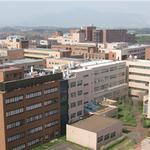
University of Tsukuba
-

Keio University
-
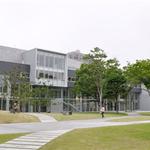
Tohoku University
-

Mesoamerican University
-

Istmo University
-

Mariano Galvez University of Guatemala
-

Regional University of Guatemala
-

Galileo University
-

Francisco Marroquín University
-

Rafael Landívar University
-

University of the Valley of Guatemala
-

University of San Carlos of Guatemala
-

Technological Institute of Tlaxcala Plateau
-

Golfo University
-

Technological University of South Sonora
-

Technological University of Huejotzingo
-

Tizimín Institute of Technology
-

Chilpancingo Institute of Technology

